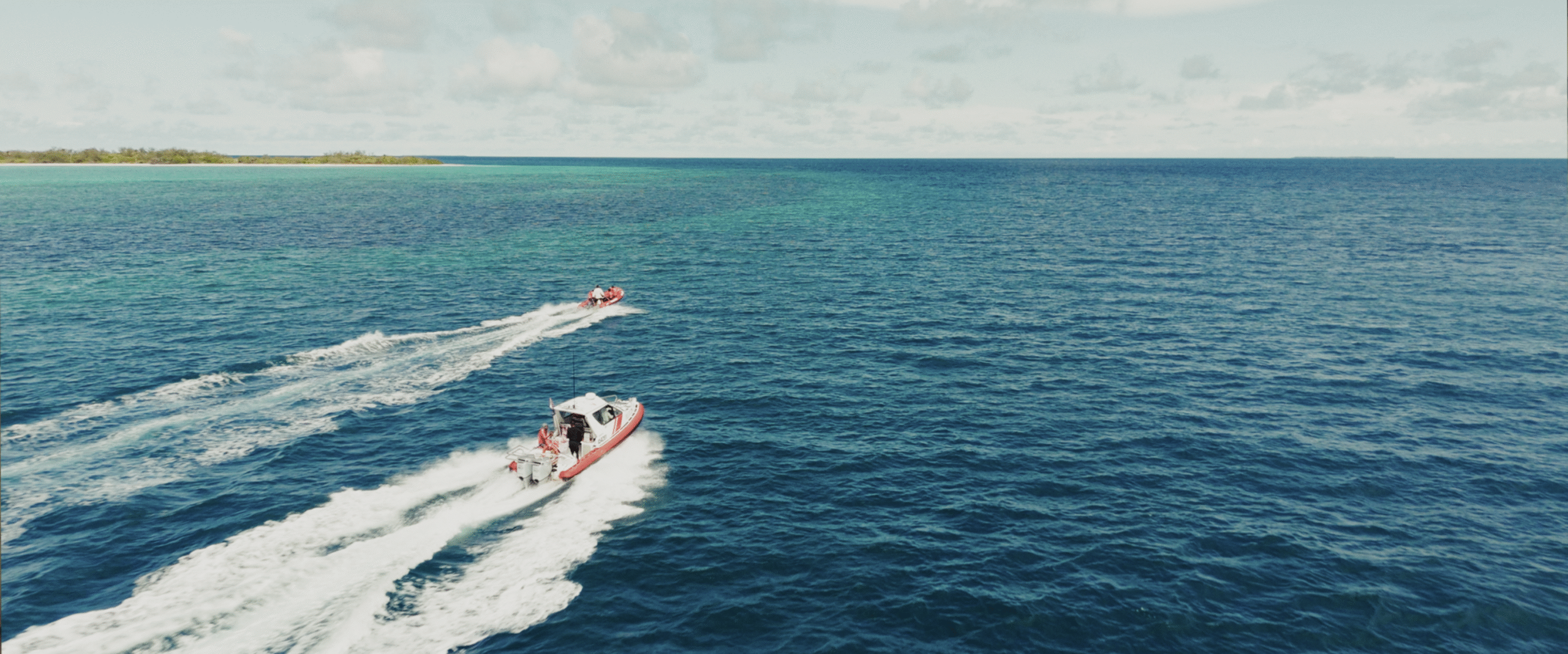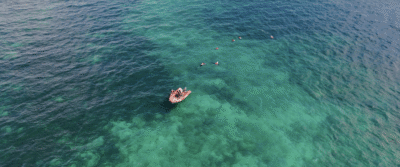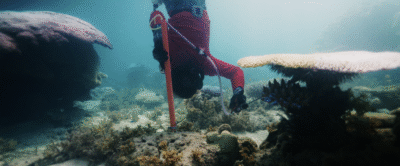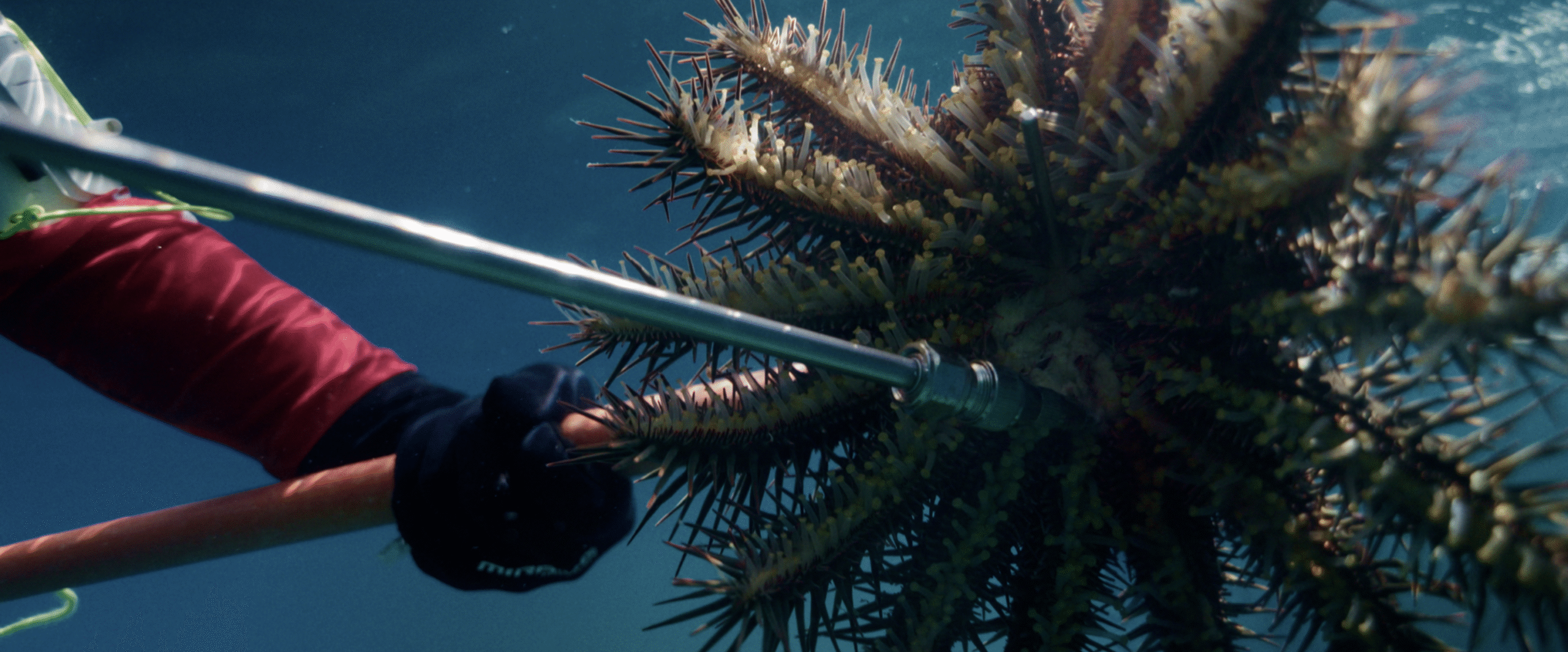Crown-of-Thorns Starfish Eradication Project
While billions of dollars have protected the Great Barrier Reef Marine Park, the Torres Strait’s culturally vital reefs have been left behind. For decades, these ecologically rich waters – the northernmost reach of Australia’s iconic reef system – have received only a fraction of the resources needed to manage devastating threats like Crown-of-Thorns Starfish (COTS) outbreaks.
The consequences are dire. Recent surveys supported by the Torres Strait Regional Authority (TSRA) revealed active COTS infestations above sustainable levels across key reefs at Erub, Masig, Ugar and Mer. Some areas face rapid coral loss that could reduce live coral cover below five per cent within 12 months if left unchecked – threatening both marine biodiversity and Traditional Owners’ deep connection to Sea Country.
There is a solution. TSRA’s $2 million pilot program shows that a First Nations-led approach works. Partnering with Traditional Owners, the program combined ancient wisdom with proven science to deliver monitoring, targeted COTS control and community awareness. It created jobs, delivered measurable environmental protection and strengthened collaboration with GBRMPA, AIMS, CSIRO and GBRF.
But the funding has run out, and the job is far from over. Without urgent action, COTS may destroy this irreplaceable part of Australia’s reef heritage – and with it, millennia of cultural connection to Country.
Help us – before it is too late.
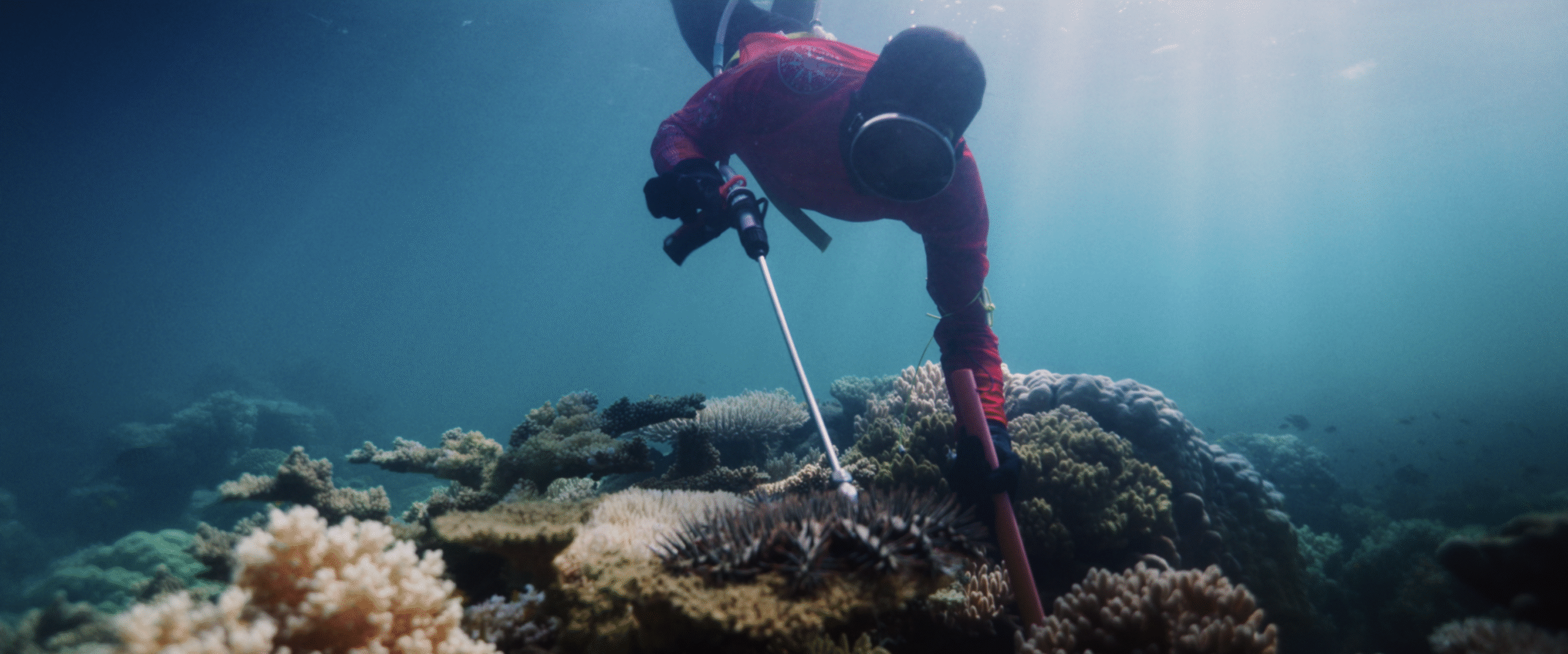 Operation Urmemeg is a community-led project to manage crown-of-thorns starfish – funded by the Torres Strait Regional Authority (TSRA).
Operation Urmemeg is a community-led project to manage crown-of-thorns starfish – funded by the Torres Strait Regional Authority (TSRA).
Introducing Operation Urmemeg
In Australia’s unique and remote far north, Traditional Owners are leading a critical project helping control crown-of-thorn starfish (COTS) outbreaks in the Torres Strait region.
Recognising the urgent conservation needs and community desire for action, the TSRA Board allocated $2 million of appropriation funding for a pilot COTS control program, demonstrating unprecedented institutional commitment to reef protection. This strategic investment reflected TSRA’s recognition that reef health directly impacts community wellbeing, economic opportunities and cultural continuity for Torres Strait Islander peoples.
What’s been done so far?
The project established a collaborative framework integrating Traditional Owners, Prescribed Bodies Corporate (PBC), research institutions and government agencies. These partnerships provided frameworks and data management platforms refined over 20 years of Great Barrier Reef research, enabling TSRA to focus limited resources on operational delivery and cultural integration.
Phase One: Foundation and Control Operations – Established the operational foundation while delivering immediate COTS control across known hotspot areas in Mer, Erub, Ugar, and Masig Sea Country.
Phase Two: Capacity Building and Training Integration – Introduced 12 Torres Strait Islander trainees into immersive COTS management training, moving beyond reliance on external specialist crews toward building local expertise for program sustainability.
Phase Three: Surveillance Expansion and Baseline Establishment – Expanded operations beyond established hotspots to encompass Central Torres Strait reef systems. This phase prioritised rapid assessment of COTS distribution and reef health across Indigenous Protected Area (IPA) islands off Warraber and Poruma, establishing critical baseline data for understanding outbreak geographic extent.
This methodology successfully demonstrated how Torres Strait Islander communities can effectively protect their sea country by integrating traditional knowledge with western conservation science through youth engagement and economic participation. The program delivered immediate conservation outcomes while establishing sustainable frameworks for community-led management, directly supporting TSRA’s Land and Sea Strategy priorities and Closing the Gap targets while maintaining Environment Protection and Biodiversity Conservation Act compliance.
The numbers:
- 10,100 COTS culled
- 1,477 hours in water
- 305 Reef Health impact surveys
- 119 hours of surveillance
- 109 days on water
- 56 reefs visited
- 12 divers trained
- 10 communities consulted
- 6 cultural advisors
What’s next?
TSRA is:
- Seeking additional funding to support a strategy for coral protection across the Torres Strait region.
- Advocating for Torres Strait reefs to be properly recognised as part of the Great Barrier Reef to receive funding and protection.
- Working closely with Traditional Owners, scientists and reef managers to tackle COTS outbreaks.
- Combining traditional knowledge with modern science to create long-term solutions for reef health across the Torres Strait region.
- Developing culturally appropriate marine monitoring methods that respect traditional knowledge and incorporate Torres Strait Islander practices
- Expanding reef health programs beyond crown-of-thorns starfish to include comprehensive coral monitoring and restoration efforts.
- Empowering Torres Strait Islander communities to lead Sea Country management using traditional knowledge combined with modern conservation techniques.
Resources
- Publications
-
Coming soon.
- COTS culled
- hours in water
- local divers trained
Frequently Asked Questions
-
Crown-of-thorns starfish (COTS), known as “Urmemeg” or “Nikrim” in the Torres Strait, are big spiny marine animals that are part of coral reefs. These unique starfish can grow up to 1 metre wide and are covered in sharp spines that give them their crown-like appearance.
COTS feed on hard coral by growing their stomach to digest coral tissue. When their numbers become too high – known as an outbreak – they can eat coral faster than it can grow back. This causes major damage to reef health and the traditional Sea Country that Torres Strait Islander communities have cared for over thousands of years.
In normal numbers on healthy coral reefs, COTS are an important part of the ecosystem and eat faster growing corals – giving the slower growing ones a chance to catch up and boost the coral diversity of our reefs.
-
COTS outbreaks are a major threat to reefs across the Torres Strait region.
When their numbers become too high, they eat coral faster than it can grow back, destroying the reef ecosystem that Torres Strait Islander communities have depended on since before time.
Recent surveys found there are too many COTS across key reefs at:
- Erub
- Masig
- Ugar
- Mer
Some areas have rapid coral loss that could reduce live coral cover to below 5% within a year if left unchecked.
Unlike the Great Barrier Reef Marine Park, Torres Strait’s culturally vital reefs have been under-supported, receiving only a small share of the resources needed to manage these threats that endanger both marine biodiversity and Traditional Owners’ connection to sea country.
-
When reefs are damaged and fish populations decline, the cultural integrity and spiritual connection between Torres Strait Islander people and their sea country is weakened. Healthy reefs sustain healthy communities and keep culture strong.
Degraded reefs also threaten the subsistence and commercial fishing that Torres Strait Islander families depend on for food security and livelihoods, impacting both traditional practices and economic sustainability.
We can reduce outbreaks by using trained divers to inject the starfish with vinegar. This kills the starfish but doesn’t harm the surrounding ecosystem.
Project photos
Rangers

The ocean – the sea – means everything to us as Torres Strait Islanders. We need more support to continue this critical work.


